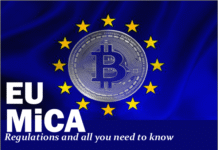After two years, the fintech industry must ensure that the correct lessons from Wirecard’s demise have been learned.
With job losses in the fintech sector on the rise and pressure on venture capital volumes and company valuations, it’s easy to perceive this as fintech’s darkest hour. It could have been a lot worse.
On June 22nd, it will be exactly two years ago Wirecard announced that €1.9 billion in cash it had previously entered into its accounts had gone missing and was presumed to have never been.
Wirecard went bankrupt shortly after, and its CEO Markus Braun (pictured) was arrested. It is only now that people who were engaged are facing lawsuits and, in some cases, criminal prosecution. Braun was accused in March 2022 and faces a maximum sentence of 15 years in prison if found guilty.
Fintech is in a completely different place now than it was in June 2020, yet the lessons learnt from the Wirecard fiasco are more vital than ever.
Consider a scenario in which the €1.9 billion Wirecard scam had not yet been discovered.
Worse yet, imagine it was waiting in the wings, ready to take center stage in the current financial environment. If the fraud had progressed further and then surfaced during today’s market collapse, it would have been far more disastrous for the fintech business.
This is one of the main questions that arises after reading Money Men, a book about the collapse of Wirecard. The book is written by Dan McCrum, a Financial Times journalist who was at the center of the action and helped reveal one of the largest corporate financial scams in history. What is truly terrifying is to consider what would have happened if Wirecard’s fraud had not been discovered two years ago.
When Wirecard went bankrupt, the fallout immediately spread to the fintechs it worked with, whether as a card issuer or a payments platform.
For fintech startups like Curve, Soldo, Anna, Payhawk, and Tymit, this meant immediate disruption, but they eventually recovered.
Customers’ trust in these firms, as well as the fintech industry as a whole, did not dwindle significantly. The Wirecard house of cards, on the other hand, could have been much, much bigger.
One of the strangest instances in the book involves a German financial powerhouse, and it hints at how the Wirecard contagion might have spread.
According to the book, Wirecard executives plotted a €50 billion merger with Deutsche Bank, ostensibly to hide the former’s missing cash in the latter’s huge pockets.
I won’t speculate on the likelihood of this happening, but one thing is apparent. Because it has purchased a larger company, a deceitful company is unlikely to turn over a new leaf.
If the acquisition had gone through, or if it had gone through but with a different bank, the events that led to Wirecard’s demise would have happened sooner or later. Given the overall sell-off in IT stocks, it appears to have corresponded with the chaotic markets of 2022.
The repercussions for the fintech sector, and possibly the entire banking system, would have been far more widespread and financially disastrous.
So, two years later, what are the most crucial takeaways for the fintech industry and those who regulate it?
There are a few that are evident. Corporate arrangements that are absurdly complicated can be a red flag. Be wary of stats that appear to be too fantastic to be true.
Short sellers might be right on the money on occasion. When a firm or an individual threatens critical journalists, the consequences are dire.




















